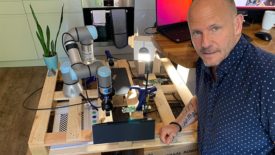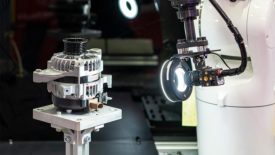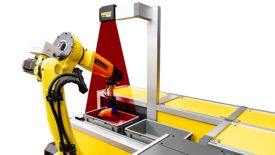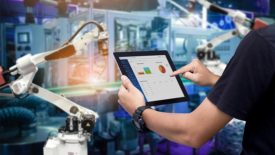Home » Artificial Intelligence (AI)
Articles Tagged with ''Artificial Intelligence (AI)''
Vision & Sensors | Trends
Dive into the world of artificial intelligence (AI) and machine learning and learn how to deploy and maintain this evolving technology.
Read More
Software
Harnessing ChatGPT to Develop Calibration Procedures for Test and Measurement Equipment
While AI cannot entirely replace human expertise in developing calibration procedures, it can certainly enhance and streamline the process.
October 4, 2023
Measurement
Advances in Automation and Robotics Make CMMs More Efficient, Accurate
September 17, 2023
Management
4 Ways Manufacturers Can Drive Business Efficiency With AI
Every advancement counts in today’s fiercely competitive economy.
September 11, 2023
Vision & Sensors | System Integration
Some Experiences Integrating Machine Learning with Vision and Robotics
Yes, there are places for machine learning in our automation world!
August 31, 2023
From the Editor | Darryl Seland
The Progression of Artificial Intelligence
Technology or Sorcery?
July 24, 2023
Vision & Sensors | LIghting
Machine Vision Lighting Powers Industrial Automation Advances
Learn how lighting can optimize multispectral imaging, collaborative robots, and deep leaning applications.
July 3, 2023
Software & Analysis
AI for Data Collection is Here!
Artificial Intelligence will change the complete environment of data collection, data analysis, and real-time action.
June 30, 2023
Vision & Sensors | Vision
40+ Years of Vision Guided Robotics
VGR is one of the largest growing sectors in both the robotics and machine vision market.
May 3, 2023
Vision & Sensors | Deep Learning
Can Deep Learning Improve My Manufacturing Process?
By applying DL with a Data-Centric Approach, Users Can Streamline Even the Most Challenging Manufacturing Steps with Fast, Accurate Automated Inspection.
May 2, 2023
Stay in the know with Quality’s comprehensive coverage of
the manufacturing and metrology industries.
eNewsletter | Website | eMagazine
JOIN TODAY!Copyright ©2025. All Rights Reserved BNP Media.
Design, CMS, Hosting & Web Development :: ePublishing












